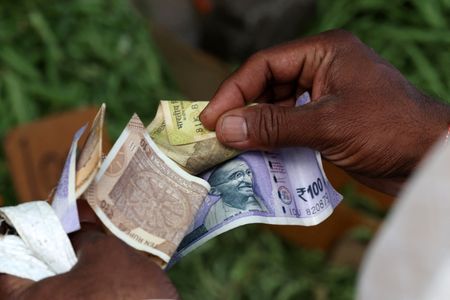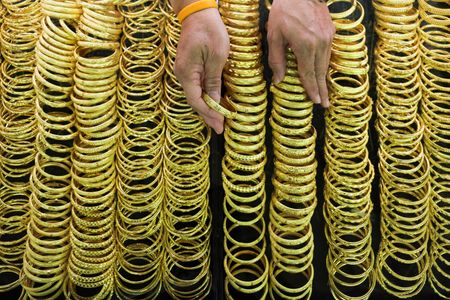By Ashwin Manikandan
MUMBAI (Reuters) – The Indian rupee extended its decline against the U.S. dollar on Monday, pressured by persistent foreign outflows and sustained dollar demand from importers, particularly state-run oil companies, traders and analysts said.
The rupee closed at 87.6550 to the dollar, compared with Friday’s close of 87.5400.
The currency had opened stronger at 87.2250, tracking a weaker dollar after a softer-than-expected U.S. jobs report on Friday raised expectations of a Federal Reserve rate cut in September.
The dollar index was down 0.27% at 98.92 as of 1025 GMT.
However, dollar-buying through the day, especially by oil importers, erased early gains, traders said.
The rupee had dropped to 87.74 last Thursday, its lowest since February and just shy of its record low of 87.95, following former U.S. President Donald Trump’s announcement of a steeper-than-expected 25% tariff on Indian imports.
The Reserve Bank of India intervened through the week to support the currency, traders said.
“Consistent foreign outflows from local stocks and elevated corporate dollar demand are likely to keep the rupee under pressure,” a trader at a private bank said.
Foreign investors sold $2 billion worth of Indian equities on a net basis in July.
Despite intraday volatility, the rupee may stabilise in the coming days, said Dilip Parmar, foreign exchange analyst at HDFC Securities.
The RBI’s rate decision at its monetary policy meeting later this week could also influence the local currency’s trajectory, Parmar added.
Meanwhile, other Asian currencies gained on Monday, led by the Malaysian ringgit’s rebound of nearly 1% as dollar weakness offered relief from recent losses.
(Reporting by Ashwin Manikandan; Editing by Janane Venkatraman)









